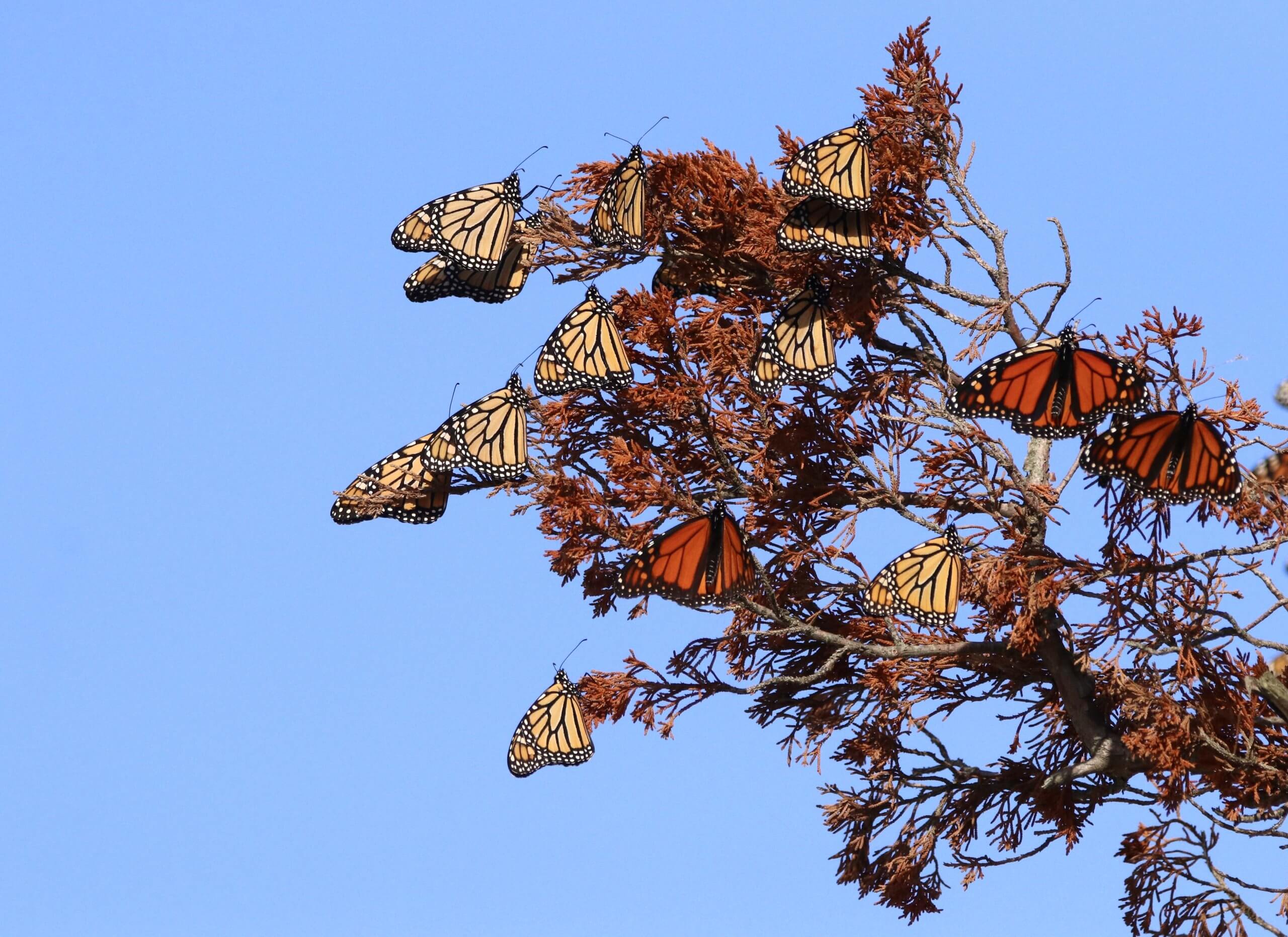The Cape May Monarch Monitoring Project is the longest-running research program for Monarch butterflies in the world! Coordinated by New Jersey Audubon’s Cape May Bird Observatory, the project is a leader in both scientific research, conservation, and public outreach. The project is now recognized as a chief contributor to documenting the epic 2,000+ mile, transcontinental migration that Eastern Monarchs take from as far north as southern Canada, down to central Mexico.
It was founded in 1990 by Dick Walton and Dr. Lincoln Brower, experts in the field of Monarch biology. It was then carried on for many years by Director Emeritus Mark Garland and previous Field Coordinator Louise Zemaitis, who gave life to the legacy that the program upholds today.
The geography of southern New Jersey provides a great opportunity for studying migration.
Cape May County is a south-facing peninsula, nestled between the Atlantic Ocean and the Delaware Bay. Northerly and northwesterly winds push winged migrants down toward the South Jersey coast where eventually the peninsula acts as a funnel, concentrating migrating wildlife down into Cape May. This can result in amazing migration phenomena with thousands, if not millions of birds, butterflies, dragonflies, and bats moving through Cape May Point in a single day.
Yet, due to the gap at the mouth of the Delaware Bay, these migrants face a dilemma. Flying over large bodies of water, especially the ocean, is highly dangerous. Getting blown out to sea almost always means death. With nowhere to land and rest, many migratory insects and songbirds can get exhausted, fall into the water, and drown. For this reason, Monarch butterflies settle into Cape May Point where they take time to rest and refuel before following land and making a big U-turn around the Delaware Bay to get to the other side. Only on days with perfect conditions, including light northwest winds, sunshine and lots of rising thermal heat, will Monarchs attempt a direct crossing from Cape May Point.
So naturally, the numbers we see here in Cape May are highly dependent on the weather. It is hard to predict when we’ll see large pushes of Monarchs, even when the weather is favorable. Almost every week, variable densities of Monarchs move through the county during the fall. The number of Monarchs observed here in a season is a good reflection of population numbers and health for these butterflies as a whole in the Northeast.
Monarch numbers in Cape May vary greatly over time. Some years with very low numbers can quickly be rebounded by much higher numbers the following year and vice versa. Monarchs, like all insects, have populations that fluctuate, oftentimes dramatically, every few years due to various climatic effects such as rainfall, droughts, and varying temperatures, as well as negative or positive anthropogenic activity in relation to habitat loss or restoration, herbicide and pesticide use, etc. It is always important to look at the grand scheme of trends over decades, rather than by year to year, to get more accurate pictures of Monarch population changes over time. That’s where our data comes in.
The field season for the Monarch Monitoring Project runs from September 1st to November 14th, right at the start and end of Monarch movement through Cape May. The project operations are overseen by seasonal staff, which consists of the current Field Coordinator, Jack
McDonough, and two Monarch Field Naturalists, Anna Haggenjos and Gayle Steffy. We monitor Monarch numbers and activity in two main ways: a daily, stationary count of migrating Monarchs and other migratory insects that are moving through the dunes of Cape May Point; and we tag Monarch butterflies to get insight into the route, speed, and stopping points of their migration to Mexico. We conduct our migratory counts for 30 min, three times a day at 2, 5, and 8 hours after sunrise. We then average this data to understand how many Monarchs are moving past Cape May each day. Our tagging is done in the field throughout the day at Cape May Point, 7 days a week.
If you are wondering how we can tag a butterfly, come to one of our Monarch tagging demonstrations at Cape May Point State Park! This is a free program that we offer through October at 2 p.m. on Fridays, Saturdays, and Sundays, at the East Pavilion next to the hawkwatch platform. Additionally, if you want to learn more about Monarch migration, biology, and wildlife gardening, come to one of our drop-in programs at 10:30 a.m. on Mondays at New Jersey Audubon’s Nature Center of Cape May and on Wednesdays at Triangle Park on Coral Ave and Lighthouse Ave in Cape May Point. We hope to see you there!








